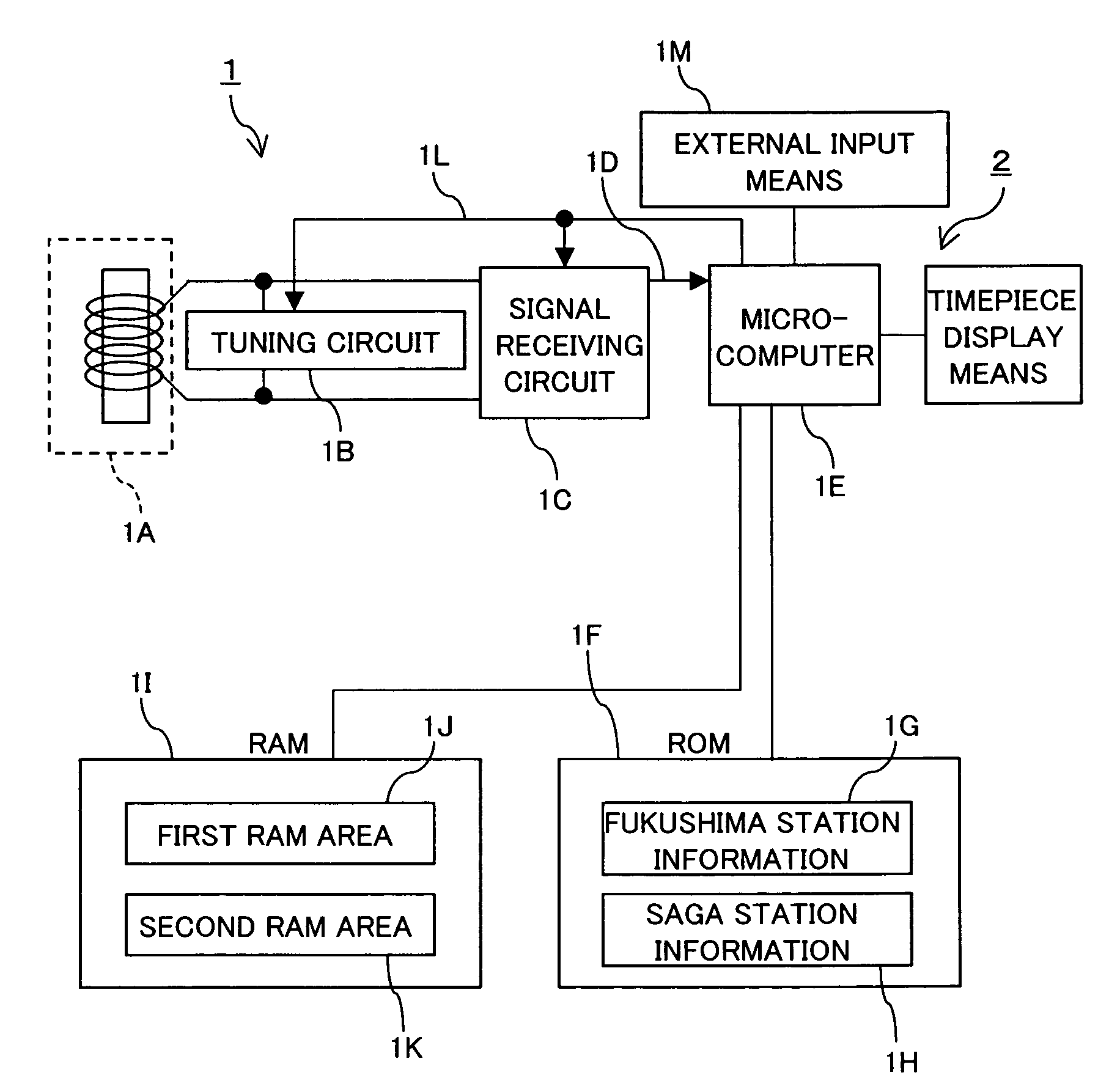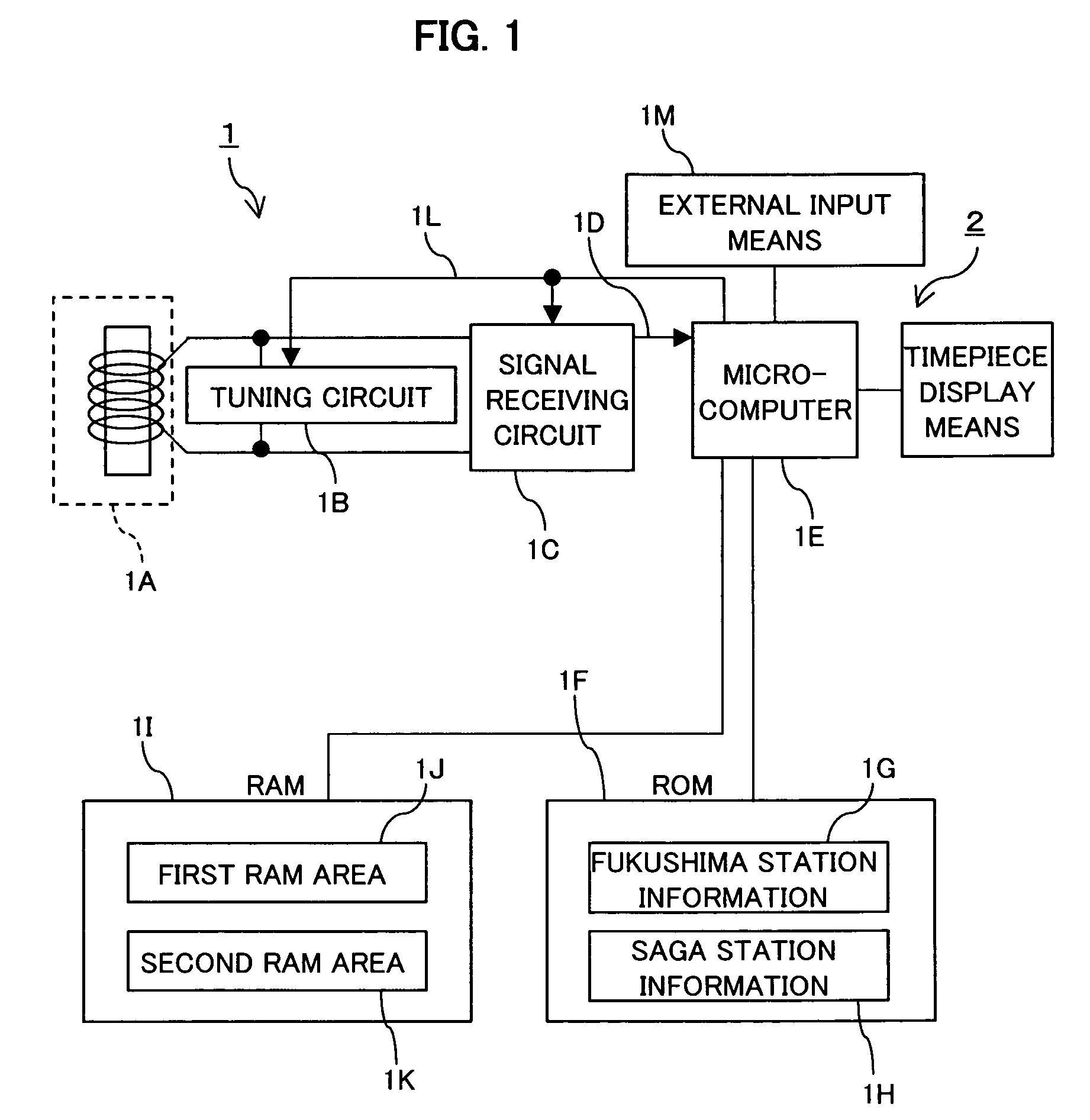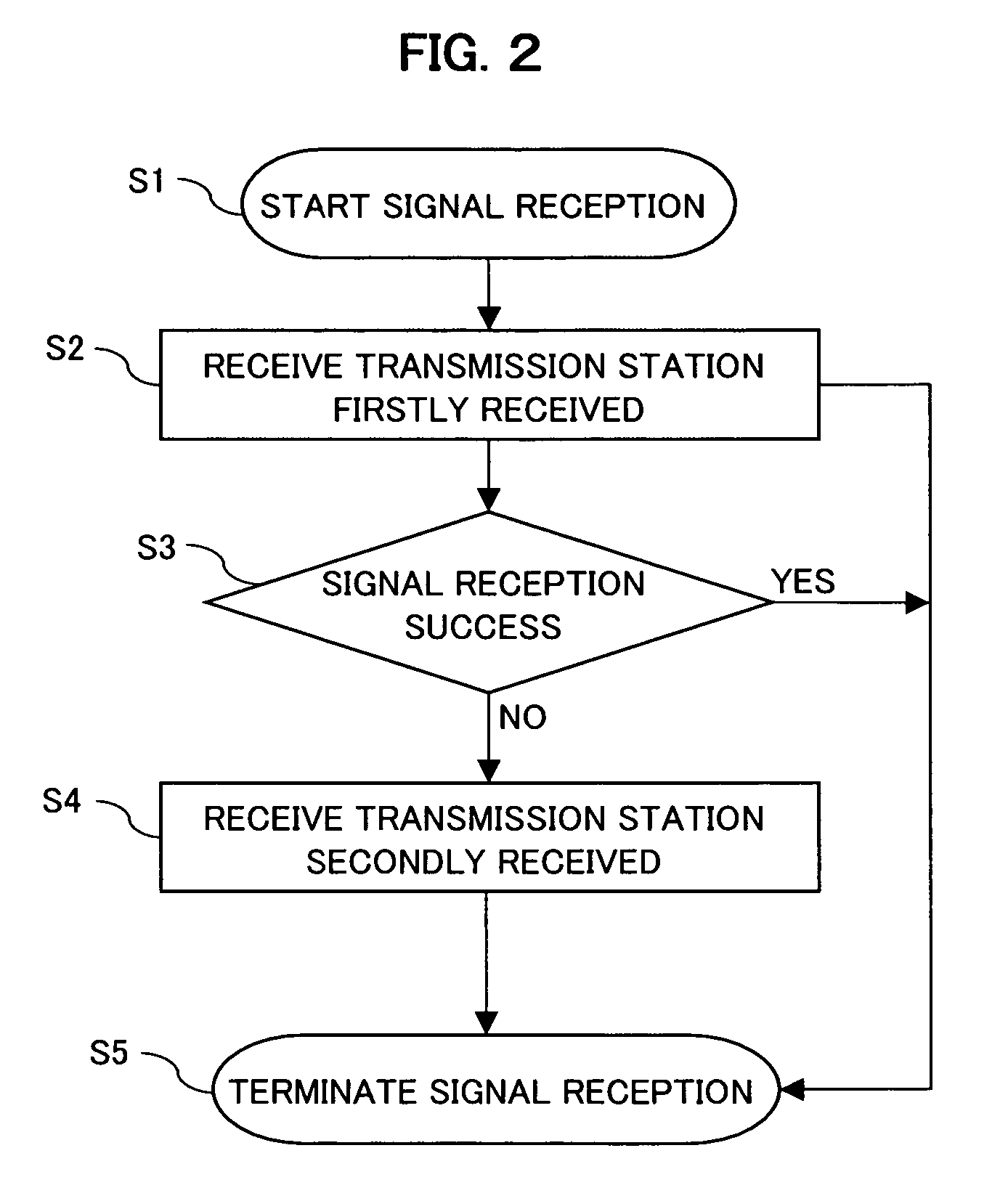Radio corrected clock
- Summary
- Abstract
- Description
- Claims
- Application Information
AI Technical Summary
Benefits of technology
Problems solved by technology
Method used
Image
Examples
first embodiment
(1) First Embodiment Mode
[0025]FIG. 1 is a circuit block diagram showing the first embodiment mode. In a receiving means 1 of FIG. 1, an antenna 1A receives a standard radio wave and a tuning circuit 1B tunes a tuning frequency of the antenna 1A, and the standard radio wave received by the antenna 1A is converted into a digital signal by a signal receiving circuit 1C. The digital signal 1D outputted from the signal receiving circuit 1C is inputted to a microcomputer 1E for assigning a receiving frequency and decoding the digital signal 1D and making the time correction of a timepiece means 2 for displaying time. A ROM 1F stores the receiving frequency, an algorithm, information for processing time information such as a year, a month, a day, an hour, a minute, etc. The ROM 1F stores, in this embodiment mode, the contents that the frequency transmitted from Fukushima prefecture is 40 KHz, the algorithm, Fukushima station information 1G describing the information for processing the tim...
second embodiment
(2) Second Embodiment Mode
[0036]A second embodiment mode will next be explained on the basis of FIG. 3. FIG. 3 is a flow chart showing a signal receiving step in the second embodiment mode of the radio correcting timepiece in this invention.
[0037]This embodiment is an example about the radio correcting timepiece in which a signal is mainly received in Japan. A start S21 is made by a timing signal from a timepiece means, etc., and an automatic signal receiving state is started in a step S22. First, the signal reception of the 40 KHz format of the Fukushima station is tried. When it is judged in a step S23 that the signal reception is unsuccessful and the judgment is NO, the signal reception of the 60 KHz format of the Saga station is subsequently tried in a step S24. Further, when the signal reception is unsuccessful and the judgment is NO in a step S25, the signal reception of a 60 KHz format of a US station is tried in a step S26. In this example, the signal reception is terminated...
third embodiment
(3) Third Embodiment Mode
[0039]A third embodiment mode will next be explained on the basis of FIG. 4. FIG. 4 is a flow chart showing a signal receiving step in the third embodiment mode of the radio correcting timepiece in this invention.
[0040]In this example, the signal reception of a station having a ceasing hysteresis on the way in the signal reception is not tried but passed at the next signal receiving time, and it proceeds to the signal reception of the next station.
[0041]A start step S31 is started by a timing signal from a timepiece means, etc., and an automatic receiving state is started in a step S32 and the signal reception of the 40 KHz format of the Fukushima station is intended to be first tried. It is judged in a step S33 whether a midway signal receiving flag Ffn corresponding to the Fukushima station described later is 1 or 0. If this flag is 1, this station is passed. In contrast to this, if this flag is 0, the signal reception is started and it is judged in a step...
PUM
 Login to View More
Login to View More Abstract
Description
Claims
Application Information
 Login to View More
Login to View More - R&D
- Intellectual Property
- Life Sciences
- Materials
- Tech Scout
- Unparalleled Data Quality
- Higher Quality Content
- 60% Fewer Hallucinations
Browse by: Latest US Patents, China's latest patents, Technical Efficacy Thesaurus, Application Domain, Technology Topic, Popular Technical Reports.
© 2025 PatSnap. All rights reserved.Legal|Privacy policy|Modern Slavery Act Transparency Statement|Sitemap|About US| Contact US: help@patsnap.com



